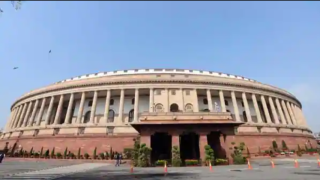MEDIA
What our Constituent Assembly debates reveal of a vital process
www.livemint.com | November 25, 2021
A textual study of the Constitution of India’s creation offers notable insights into the collective mind of the country’s founders
The making of India’s Constitution was a carnival of democracy. Emerging from the shackles of foreign rule, our Constituent Assembly was scripting a collective vision of the future of the country. Between December 1946 and 1949, the Assembly met for 165 days and spoke about 3.6 million words overall. This would mean around 8,000 pages of written documents. These laid the foundation for our Constitution. It is no surprise then that these debates, richly adorned with philosophy and emotions, capture the minds of not just legal scholars, but anyone interested even remotely in policymaking.
We conducted a textual analysis of the country’s Constituent Assembly debates as part of a larger project. As we celebrate Constitution Day, it may be worthwhile to look at some findings.
Diversity and participation: The Assembly was somewhat diverse, and this is generally known. Almost a quarter of the members came from princely states, a considerable proportion. In terms of gender, there were only 15 women, which perhaps by the standards of 1947 India (with about 8% literate women) may be considered admirable. Around 90% were Hindu. But, most interestingly, despite an overwhelming presence of Congress party members, there was great diversity in their ideological positions. Between the socialist K.T. Shah, Hindu Mahasabha leader Syama Prasad Mukherjee and liberal Minoo Masani, the party had kaleidoscopic diversity. In general, scholars have often claimed—in the light of the 1940s’ historical and colonial context—that the Assembly was fairly diverse.
But the mere presence of some members does not necessarily imply that diverse viewpoints were considered. A more useful measure of representativeness is members’ participation in the debates. We draw up a Lorenz curve for the number of words spoken by each member. When we line up the number of words spoken by each member, the graph exhibits an extremely unequal distribution. Less than 6% of members spoke 50% of all the words uttered in the Assembly. Women members spoke less than 2%. (Rajkumari Amrit Kaur and Sucheta Kriplani, among others, didn’t say anything). The most voluble speakers were Rajendra Prasad and Ambedkar (7.5% and 7.2% respectively). Prominent national leaders like Nehru and Patel contributed to merely 2.18% and 1.47% of the debate by word-count. The Gini coefficient of the number of words spoken in the Constituent Assembly debates is 0.756, a very high figure, indicating high lopsidedness. This is worse than the Gini index of income in South Africa, the world’s most unequal country in terms of what people earn.
Sure, not participating in the debates does not mean non-participants did not contribute to the constitution-making. For instance, Rajkumari Amrit Kaur was part of many sub-committees, like the one on fundamental rights. Yet, this is arguably a good - if crude - measure of how deliberative the process was.
Constitutional Ideas: We also picked some important constitutional concepts and mapped their frequency of utterance against how many people invoked them. This measure is also rough, but it allows us to see which concepts dominated the talks and which ones were hardly discussed. Lack of discussion does not mean something is less important; it can very well mean an idea did not merit a debate because of convergence in opinion. But even within this assumption, the measure offers us a glimpse into the minds of our founding fathers and mothers.
We eliminated frequently occurring words like ‘elections’, ‘union’, ‘constitution’, ‘amendment’, ‘article’ and ‘state’, and took up some important concepts relevant even today. Among these, as visible in the graph, ‘rights’ came to be the most invoked word (bubble size shows the frequency of utterance). Members spoke considerably about ideas involving ‘religion’, ‘caste’, ‘Hindu’ and ‘Muslim’, not surprisingly, although much less than ‘freedom’. More members uttered ‘education’ as compared to ‘health’, and that too, a lot more times. ‘Gandhi’ featured in the discussions more than ‘god’, and words like ‘secular’ were used a lot more than ‘dharma’ or ‘morality’. ‘Women’ was invoked more than ‘adivasis’. Interestingly, ‘liberty’ invocations far exceeded ‘equality’, which in turn was used considerably more than ‘socialism’.
A count of single words by itself does not tell us much about the nature and direction of the debates, but the co-occurrence of words in speech is indicative of speakers’ sentiments on a topic. Prohibition of alcohol, for instance, was hotly debated in the Assembly by 51 members and the term was used 212 times. Gandhi’s views advocating prohibition resonated strongly in the Assembly. Mahavir Tyagi and H.V. Kamath, who invoked ‘Gandhi’ most frequently in their speeches, also spoke for prohibition. While Ambedkar never invoked ‘Gandhi’, he used the word ‘prohibition’ 11 times (and was non-committal on it). Opposition to prohibition actually came primarily from Dalit and Adivasi leaders like Jaipal Singh Munda, then president of the Adibasi (Tribals) Mahasabha and an Olympic hockey player.
Again, these estimates may not signal anything concrete, but they do offer a window into what occupied the Assembly’s collective mind. This project aims for deeper research on how we the people came to where we’ve reached. And the path is not as linear as one would think.
Shivkumar Jolad & Yugank Goyal are associate professors of public policy at FLAME University.

